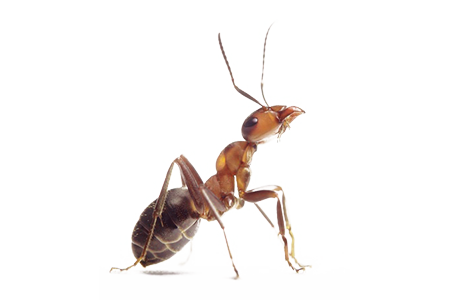Imported Fire Ants

IMPORTED FIRE ANT: (Solenopsis invicta or Solenopsis wagneri)
Description:
Fire Ants are small, less than a quarter of an inch long, and look similar to normal house or garden ants so it is easy to confuse this species with common native ants. Fire Ants are coppery-brown to black and live in underground colonies. The colonies consist of extensive underground tunnels with only a dirt mound, known as a nest mound, often visible above the surface. The nest mounds have no visible entry-exit holes on top of them. It’s interesting to note that nest mounds are not always evident.
Biology:
Fire Ants are not native to southern California and have been imported since the early 1920’s. These invasive and destructive ants have slowly migrated through most of the southern United States. All wingless Fire Ants are sterile female workers. The winged variants, known reproductives, live in the nest mound and swarm twice a year, usually in the afternoon soon after rain. Swarming is most common in the spring and fall. Fire Ants are particularly aggressive, especially near their nest. They are fast and have a venomous bite. While most people have mild reactions to bites from Fire Ants a small number of people sensitive to the venom can experience serious swelling or allergic reactions.
Did You Know?
When swept away by flood water, Fire Ants will link together to form a living raft. At the first sign of water damage, the Ants will grab their eggs from the nest and cling together for safety helping them survive and spread to new areas.
Impact:
Fire Ants pose a serious threat to people and property. They can cause significant damage to plants in irrigated landscapes and are especially destructive to turf grass. Their nest mounds can even cause damage to mowing equipment. Fire Ants have been known to collect in electrical panels and equipment causing expensive property-wide shutdowns. These ants also nest in urban structures such as walls, offices, and homes. Building invasions can threaten the occupants, especially children and the elderly. Invasions typically happen during heavy rain and flooding.
Solutions:
A pest professional should be contacted to deal with Fire Ants who will use a combination of integrated pest management techniques to prevent and eradicate this serious pest. It's best to contact a pest management service for regular thorough inspections to prevent the establishment of Imported Fire Ant colonies.
Additional Links:
http://www.ipm.ucdavis.edu/PMG/PESTNOTES/pn7487.html